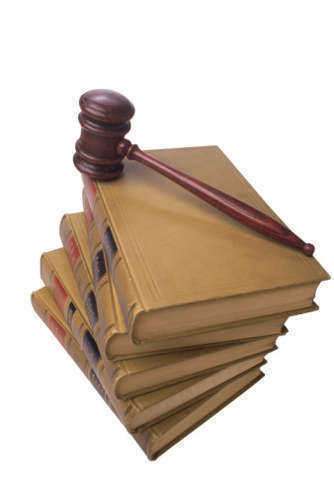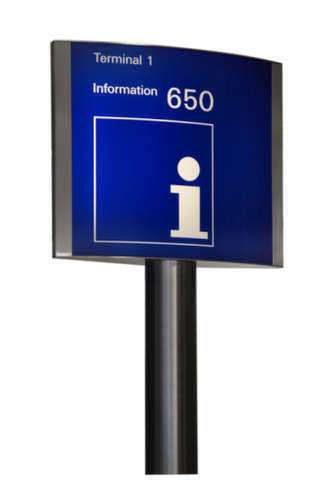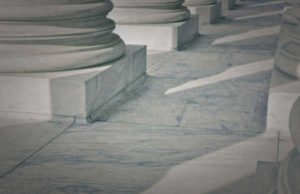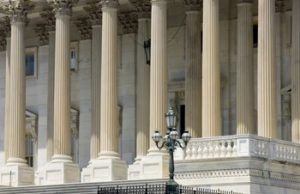
Supreme Court Justice: Earl Warren
Earl Warren was the fourteenth Chief Justice of the Supreme Court. He was born on March 19, 1891 in Los Angeles, California. Earl Warren grew up in Bakersfield, California and attended Kern County High School. He went on to attend University of California, Berkeley where he graduated in 1912 with a B.A. in Legal Studies, and then Boalt Hall Law School, where he received his LL.B. in 1914.
Eisenhower picked Warren in September 1953 to take the office the Chief Justice of the Supreme Court. As the chief Justice, Earl Warren was a very liberal justice, more than anyone had anticipated. Earl Warren was able to set up a long series of landmark decisions due to building a winning coalition. Warren’s term of office was included numerous rulings on civil rights, police arrest procedure, and separation of church and state in the United States.
Famous Cases
Brown v. Board of Education of Topeka (1954): A landmark Supreme Court decision that declared that state laws which separate public schools for white and black students as unconstitutional laws, which overturned the precedent set by Plessy v. Ferguson (1896). Justice Hugo Black was a part of the unanimous decision which stated that the separate educational facilities were inherently unequal.
The case called for the school district of Topeka to reverse its racial segregation policy for the schools. The Topeka Board of Education operated separate elementary schools under a Kansas law from 1879, which allowed but did not require the districts to have separate elementary schools for white and black students in twelve different communities with populations exceeding 15,000. The plaintiffs in the case felt that a system of racial separation, while pretended to provide separate but equal treatment of black and white Americans, perpetuated inferior services, treatment, and accommodations for black Americans.
The Supreme Court heard the case in spring 1953, but they could not decide on the issue, so they reheard the case in fall 1953. During the second rehearing, the court paid close attention to whether the Equal Protection Clause of the Fourteenth Amendment prohibited the operation of different public schools for black and white students. The case was reargued at the request of Justice Felix Frankfurter, as a stalling tactic to gather a unanimous consensus in this case which would outlaw segregation. The justices who supported desegregation spent much effort trying to those the initial dissenters to join a unanimous, in order to prevent providing a legitimate counterargument for outlawing segregation.
Chief Justice Earl Warren set up a meeting with all the justices, and argued that the only reason to allow segregation was having an honest belief in the inferiority of African Americans. Chief Justice Earl Warren further stated that the Court needed to overrule Plessy v. Ferguson in order to maintain the court’s legitimacy as an institution of liberty, and it unanimous to avoid Southern resistance.
The holding of the Supreme Court was that, even if segregated white and white schools had equal teachers and facilities, segregation itself was unconstitutional and harmful to black students. There was a significant social and psychological disadvantage in black children due to segregation itself. This issue moved the case away from the question of whether the schools were equal, and instead looked at whether the idea of “separate but equal” was constitutional. The case resulted in de jure racial segregation being a violation of the Fourteenth Amendment’s Equal Protection Clause and also paved the way for the civil rights movement and integration.
Baker v. Carr (1962): A landmark Supreme Court case that moved away from the political question doctrine of the Court, and decided that that redistricting issues were justiciable questions, meaning that federal courts could intervene in order to decide reapportionment cases. After Chief Justice Earl Warrant left the Supreme Court, he stated that the Baker v. Carr line of cases were the most important cases in his tenure as the Chief Justice.
Charles Baker, the plaintiff, was a Republican residing in Shelby County, Tennessee, which was the county where Memphis was located. According to the Tennessee State Constitution, legislative districts had to be redrawn according to the federal census every ten years to create districts with substantially equal population. Baker’s issue was that Tennessee had redistricted since the 1901 census.
By the 1960’s, the population had shifted dramatically so Shelby County had nearly ten times as many citizens as some of the more rural districts. This meant that representationally, the votes of the citizens from the more rural districts had more value than the votes of the urban citizens. The argument made by Baker was that this issue was not letting him receive the equal protection of the laws which were required by the Fourteenth Amendment.
Joe Carr, the defendant, was sued as Tennessee’s Secretary of State. While he had not set the district, he was sued ex officio since he was the official responsible for elections conduct of the state as well as and the district map publication. Tennessee argued that legislative districts were not judicial questions, but instead political questions, and should not be determined by the court. The defendants of the case argued unsuccessfully that legislative district reapportionment should not have been resolved by federal courts since it was a “political question”. The decision was split in a 6 to 2 and resulted in a reformulation in just exactly what questions could be considered “political”.
The decision in this case was one of the most stressful in the Court’s history. No clear majority emerged and one of the justices was so torn that eventually he recused himself. Chief Justice Earl Warrant and the Court finally handed down an opinion on March 1962, almost a year after the case was initially argued. The Supreme Court split 6 to 2, with Chief Justice Earl Warren siding on the majority, and ruled that the case was justifiable.






























